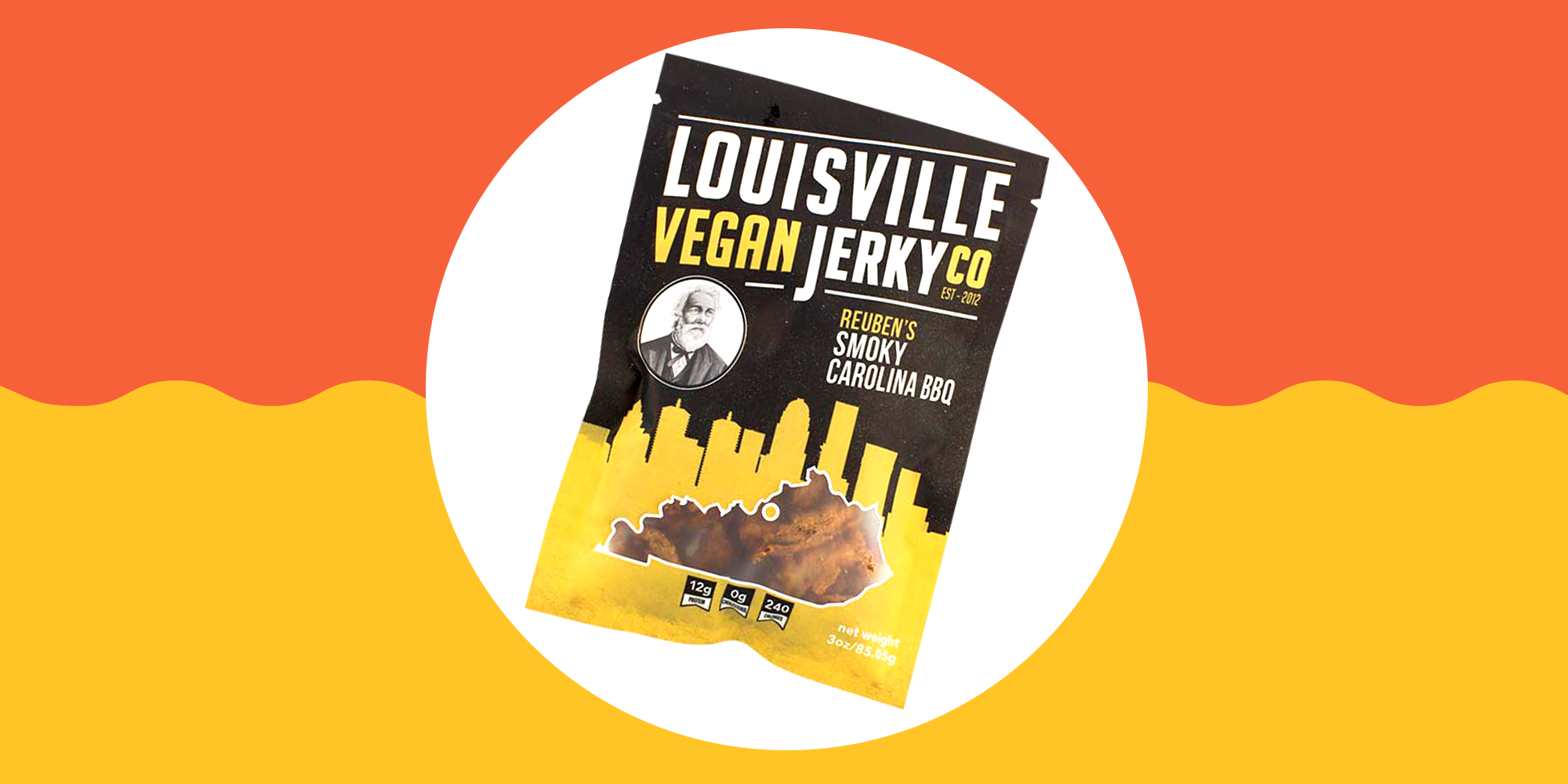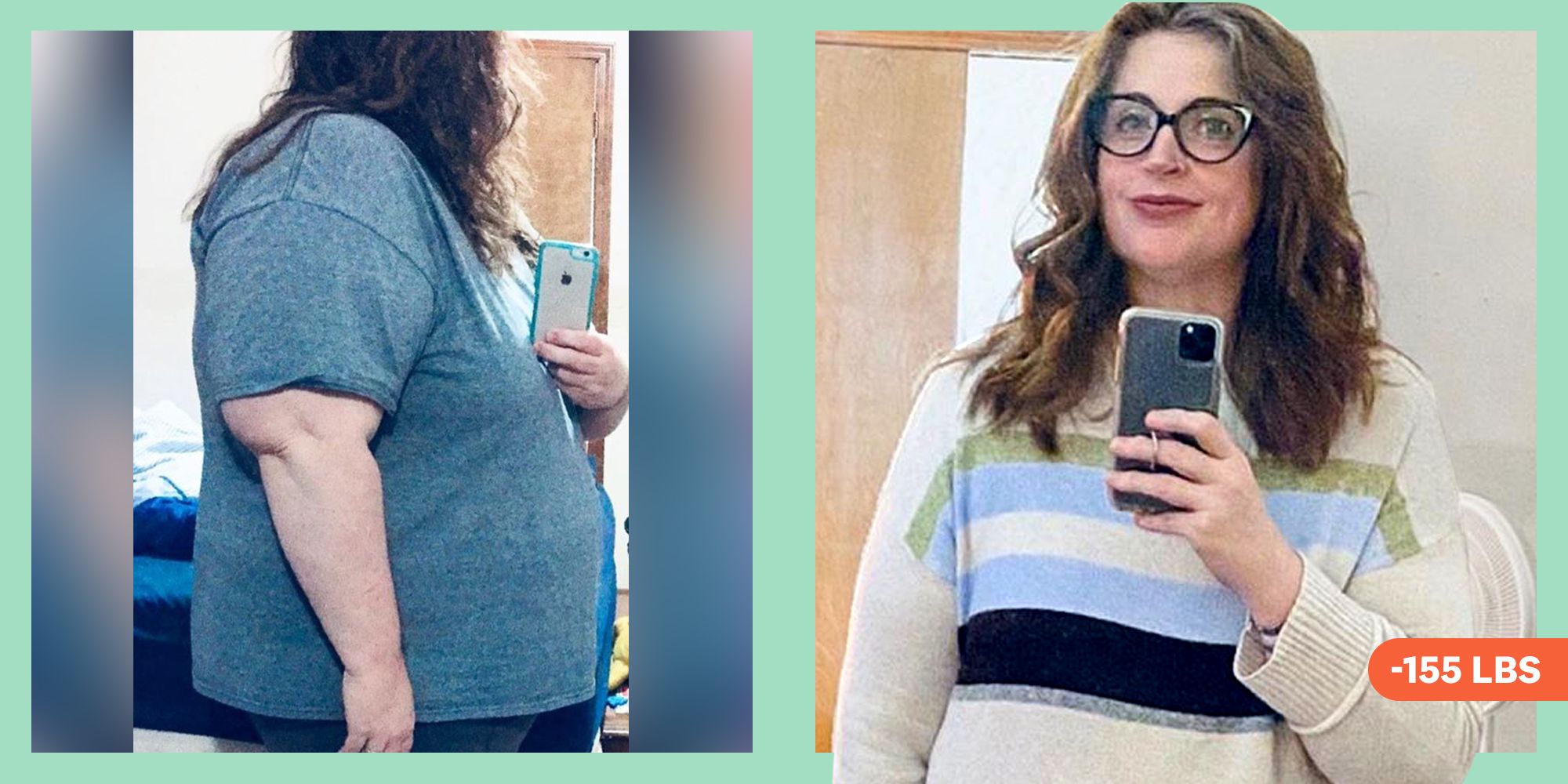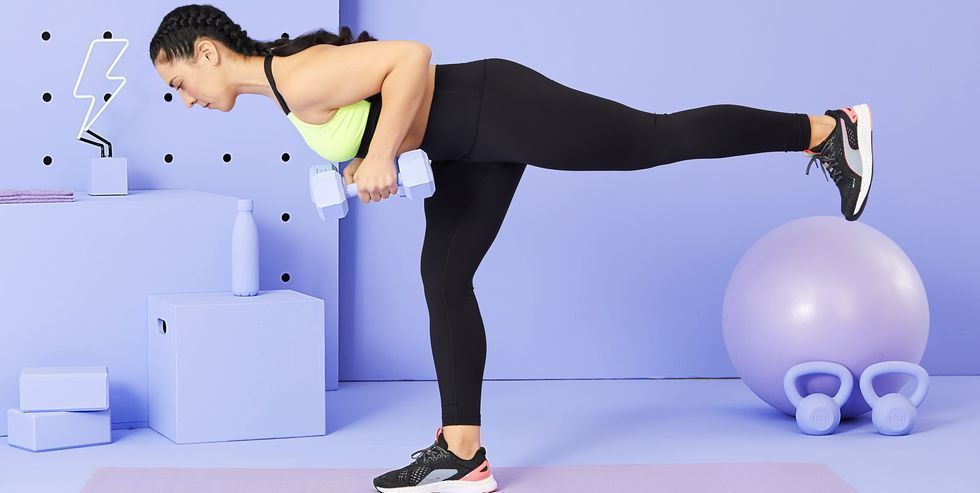Between diet trends like dry fasting, the Slow-Carb diet, and even Warrior diet, it’s easy to forget that there are still some pretty simple, tried-and-true eating styles that are proven to work when it comes to weight loss. One example? A high-protein diet.
Increasing your protein intake can lead to increased muscle mass and increased metabolism, as well as other benefits (we’ll get into those below). What’s more, it’s not a restrictive eating method, which means it’s more sustainable than a lot of popular diet approaches.
Still, it isn’t quite as easy as just eating more steak (sorry!), especially if you want to ensure a healthy, nutrient-dense diet that will actually help you shed pounds over time. The other tricky part? The best protein sources—fish, lean meats, dairy, beans—aren’t as quick or convenient as most carbs or even fruits and veggies. “Traditional protein sources aren’t usually grab and go. And if they are, they’re often processed, fried, or unhealthy,” says nutrition expert Angela Ginn, RD, a spokesperson for the American Dietetic Association.

That may help explain why up to a third of women between the ages of 20 and 40 don’t get their recommended daily amount of protein, according to data from the U.S. Department of Agriculture. And in light of the fact that a growing number of nutritionists believe that the current dietary guidelines for this mighty macronutrient are way too low, we’re really missing out.
Consider this: A Johns Hopkins University study found that a diet in which roughly a quarter of the calories (about 60 percent more than the recommended 10 to 15 percent) come from lean protein sources reduced blood pressure, LDL (“bad”) cholesterol levels, and triglycerides better than a traditional higher-carb diet. Other research finds that diets rich in protein can help prevent obesity, osteoporosis, and diabetes.
Okay, so clearly there’s something to eating a diet that’s high in protein. Here’s what you need to know about using a high-protein diet for weight loss, and how to make it work for you.
How exactly does eating more protein help you lose weight?
The fact that a high-protein diet can help you lose weight might seem a little counterintuitive, especially since many high-protein foods are often more calorie-dense than many high-carb foods, like fruits and veggies.
But here’s the thing: High-protein foods take more work to digest, metabolize, and use, which means you burn more calories processing them. They also take longer to leave your stomach, so you feel full sooner and for a longer amount of time. The cumulative effect has obvious benefits for anyone who is watching their weight.

In a study published in Nutrition Metabolism, dieters who increased their protein intake to 30 percent of their diet ate nearly 450 fewer calories a day and lost about 11 pounds over the 12-week study without employing any other dietary measures.
And if, like most successful dieters, you’re burning calories as well as counting them, protein is doubly essential for making sure you lose fat, not muscle. Your body uses the amino acids in protein to build lean muscle, which not only makes you stronger and more toned but also burns calories even when you’re not active. Ultimately, this keeps your metabolism humming along at high speed so you can burn off the occasional cookie, no problem.
How much protein should I be eating for weight loss?
Experts advise consuming between 0.5 grams and 1.0 grams of protein per pound of your body weight. That’s 70 grams to 140 grams a day for a 140-pound woman. Skew on the high end if you’re very active, and on the low end if you’re trying to lose weight. If both apply, shoot for an amount somewhere in the middle—around 130 grams.

Aim to get at least 30 of those grams at breakfast, says Donald Layman, PhD, a professor emeritus of nutrition at the University of Illinois. (That’s roughly the amount you’ll get from two eggs and a cup of cottage cheese.) After fasting all night, your body is running on empty and may start drawing on muscle tissue for fuel if you don’t replenish its protein stores first thing in the a.m. Plus, studies have found that protein-rich breakfasts can help regulate your appetite all day.
But not all proteins are created equal. While nuts, whole grains, and veggies technically count, they don’t contain all nine of the amino acids your body needs in order to build lean muscle. Those that do—known as complete proteins—are typically found in animal products. Your best bets are skinless white chicken or turkey, seafood, low-fat dairy, pork tenderloin, and lean beef. All of these foods have just one to three grams of fat per 50-calorie serving.
Vegetarians and vegans need to be a little more creative. Pairing incomplete proteins—peanut butter on whole-wheat bread, or brown rice and beans, for example—can pinch-hit for complete ones. Or nosh on complete proteins such as tofu, hemp seed, buckwheat, and quinoa. The beauty of protein is that with so many tasty options, getting your daily dose is a simple pleasure.
How much weight can I lose on a high-protein diet?
A high-protein diet can be great for weight loss since it naturally allows you to cut back on other items, like swapping in a salmon dish instead of pasta for dinner, according to Brigitte Zeitlin, a registered dietitian and owner of BZ Nutrition in New York City.

The amount of weight you may lose, though, will depend on various factors, including age, gender, what your initial diet looks like, and which types of protein you’re adding to your diet (again, you want leaner cuts of protein rather than high saturated fat items, for example).
One thing to keep in mind is that bodies absorb protein better when it comes with some carbohydrates, so pair your proteins with a vegetable or fruit to get the most out of it, says Zeitlin.
What are the health benefits of a high-protein diet?
Making sure that every meal and snack have a good source of protein in them will help keep you more focused and feeling satiated and satisfied throughout the day, Zeitlin says. Protein also helps build and maintain strong muscles so you may notice your body looking a lot leaner, even without working out.
Additionally, if you’re cutting back on a lot of white flour items to make room for more protein then you’ll also reduce the amount of inflammation in your body, which may be contributing to weight gain. You may also notice that your skin looks clearer and brighter with less white starch and more protein, says Zeitlin.
What are the potential side effects of a high-protein diet?
If you’re focusing on more protein and less carbohydrates in your diet, your fiber intake make take a hit, since fiber is only found in carbohydrates, says Zeitlin. Less fiber means more bloat, constipation, and higher risk of heart disease and chronic illnesses if you end up really deficient in the stuff. So make sure to include veggies throughout the day and add in plant-based proteins, like chickpeas, lentils and edamame, she says.
Talk to your doctor before upping your protein intake a ton, just to make sure the diet is right for you and your needs, says Zeitlin. Extremely high-protein diets could cause stomach cramping, excessive urination, or constipation, and if you’re experiencing those things, cut back to how much protein you ate before.
What does a sample day of eating a high-protein diet look like?
Here’s an example of what a typical day on a high-protein diet could look like:
- Breakfast: Two scrambled eggs with spinach and ¼ avocado
- Mid-morning snack: Part-skim cheese stick
- Lunch: Salad with a sprinkle of hemp hearts and 6 oz. of grilled chicken
- Afternoon snack: Plain Greek yogurt with ½ cup of berries (either on top, or toss into a blender with 8 oz. of milk/unsweetened almond milk and have as a smoothie)
- Dinner: 6 oz. grilled salmon with roasted or sautéed veggies
What are the healthiest high-protein snacks?
Add these items to your grocery list to have high-protein snacks and foods on hand.
Collagen Sticks
(1 packet = 9 grams of protein)
Easy to take on the go to add into any tea, latte, or water.
Nut Butter Packets
(1 pouch = 4-7 grams, depending on brand)
These are easy to keep at your desk or take with you when traveling. Add to some fruit or enjoy on its own.
Plain Hemp Hearts
(3 tbsps = 10 grams of protein)
You can simply add 3 tablespoons of hemp hearts to your salad or sprinkle into a yogurt for a versatile and filling protein option.
Brami Beans
(1 snack size bag = 7 grams of protein)
These crunchy snacks are made from lupini beans and come in a variety of flavors.
Hemp Yeah! Protein Bar
(1 bar = 10 grams)
“Look for bars with single-digit grams of sugar and double-digit grams of protein,” says Zeitlin.
Jerky
(1 ounce = 9.4 grams)
Try beef or turkey—both make a flavorful snack.
Roasted Soy Nuts
(1/4 cup = 17 grams)
They’re a nice break from the usual peanuts and cashews.
Protein Powder
(4 1/2-tablespoon scoop = 16 grams)
Keep a canister of protein powder at your desk for a quick protein fix. It comes in four flavors.
Hard-Boiled Eggs
(1 egg = 6 grams)
Cook a dozen, stick them in the fridge, and grab one when you need a high-protein snack or want to add protein to a meal.
String Cheese
(1 stick = 8 grams)
Pair some low-fat string cheese (80 calories each) with an apple and a few crackers for a filling snack that will easily hold you over until your next meal.
Source: Read Full Article
